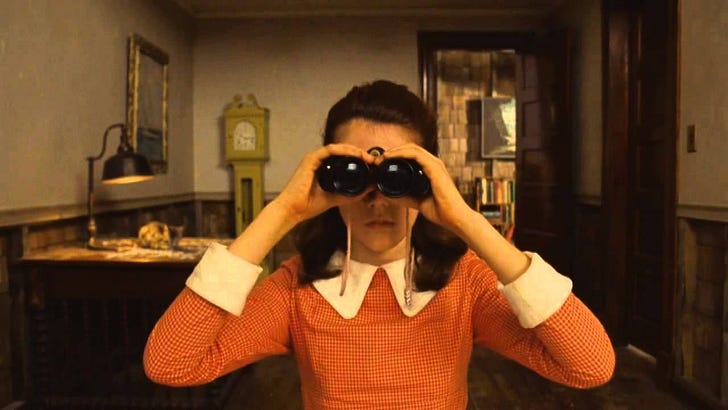Ru(Mur) Has It: Symphony No. 3/4 in C# minor
“Variations on Benjamin Britten” and My Guide to the Young Persons of Leoben
Last post I talked about the teaching assistants from the UK. I will do so again briefly as the 1945 piece by Benjamin Britten, The Young Person's Guide to the Orchestra has British roots and a really banging presence in pop culture as it was popularised in the Wes Anderson film, Moonrise Kingdom. Both the movie and the piece focus on young people as the latter follows two young 12-year olds who decide to run away in the hills of New Penzance (New England) and the former was commissioned to be used as a teaching tool for British schools and now is used by many many elementary music teachers (looking at you mom).
The piece shows off each instrumental section of the orchestra, playing different parts of the score over and over again. Around 17 minutes long, it is 4x times as long as Fleetwood Mac’s song “Over and Over” and contrasts drastically with the sharp and strong tones of Britten’s theme inspired by 17th-century Henry Purcell, who was probably was taking snuff, and the warm crooning of Christine McVie (RIP), who definitely was taking a mixture of…things.
Could it be me?
Could it really, really be?
Over and over (ooh)
Could it really, really be?
Planning for my first introductory lesson which was about, well, me, was a task and I had to wrack my brain for fun teaching tools. In the gymnasium, I have ages 10-18 and the 1st graders, as they call them, are just getting their introduction to English. For the young people above the age of 14, I could talk quickly and do games about the regions of the US, but for the little ones, it required some creativity. An intro lesson should be relatively straightforward as it requires less research and more pulling information about oneself. However, I wanted to be intentional so I didn’t have to revise it for the HLW and the total of 39 different classes I would have at the gymnasium, and it wouldn’t be boring as I delivered it over and over weeks since our starting date on October 2nd. My week, however, was not boring and as per usual in my routine-aspiring life, there were several chaotic variations on themes like commuting, eating, sleep deprivation, and money.
Rumour Has It:
…that I found myself staying on Beethovengasse in Wiener Neustadt with a fellow Iowan TA who went to the same high school as a close friend from Bowdoin. Small world. Wiener Neustadt translates to ‘New Vienna’ but with the authority given to us from small town Iowa, we have deemed it ‘Wiener Short Stadt’ as you can see all of the city by foot in less than an hour.
Rumour Has It:
…that you have to drive many an hour to get to the airport to fly anywhere from my hometown. Driving through the Midwest listening to Fleetwood Mac of course, you encounter many pigs and when planning my introduction lesson, I used the tried-and-trued “Two Truths, One Lie” format. Many of my students thought that the ‘lie’ was this fact about Iowa: there are about eight pigs per every person in Iowa, so approximately 24 million pigs. The rumour is true.
Rumour Has It:
…that J has eaten a sizeable portion of the entire pig population in Austria. I cannot overstate how much this man loves döner kebap. So much so that he has already familiarised and rated all the döner places in both Leoben and most in Graz where there is one every other block. Döner is his lunch everyday in contrast to me trying to hold out until I get home from school at 2pm to eat my lentils. Maybe he is onto something. Now onto the real reason you are here with our first movement
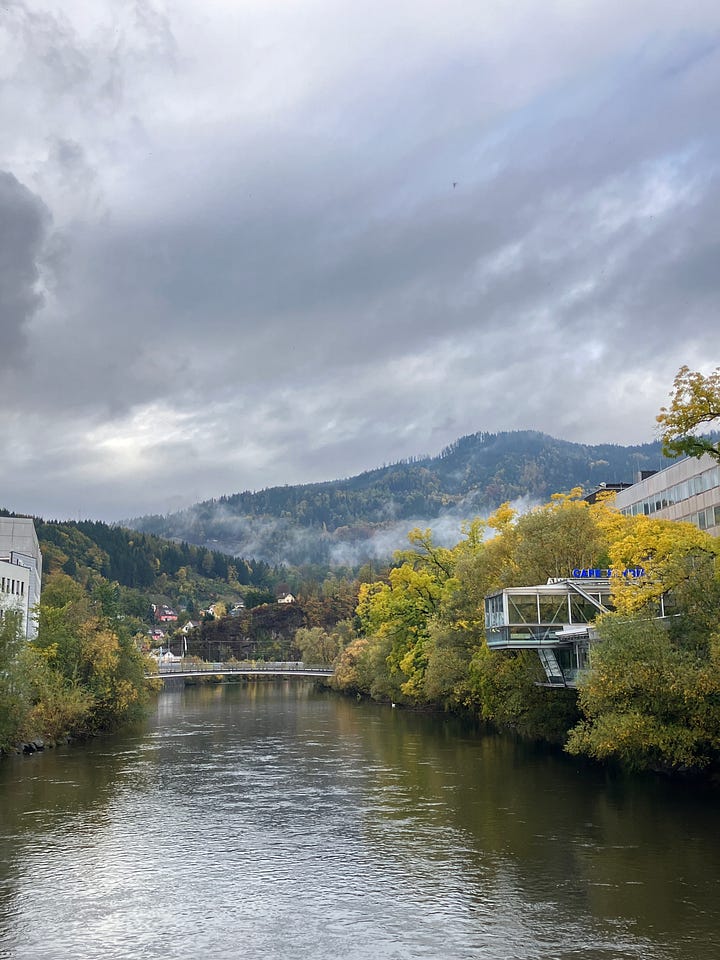
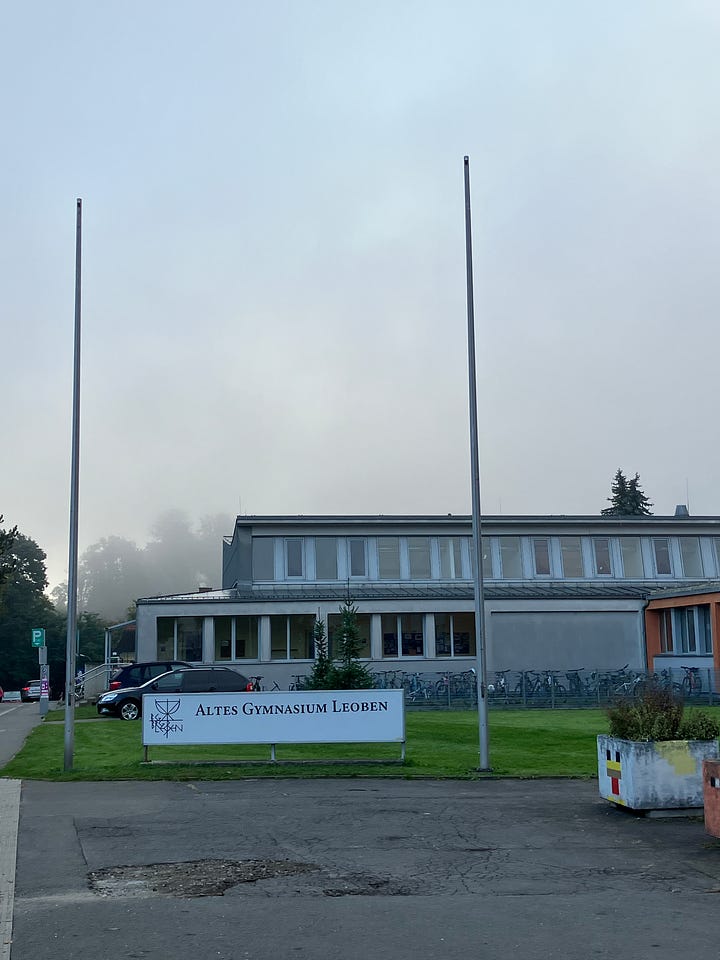
I. Allegro: Fugue
Most fugues open with a short main theme, the subject, which then sounds successively in each voice. When each voice has completed the subject, the introduction or exposition is complete. This is often followed by a connecting passage, or episode, developed from previously heard material. Episodes repeat until the music has returned to the opening key, or tonic and then close with a coda. In this sense, a fugue is a style of composition, rather than a fixed structure.
I like the idea of the first introduction to my teachers, students, peers, and city being flexible rather than a fixed structure. I prefer, however, to have a fixed structure for my teaching hours and that does not include a 5am wake-up call. However, in order to get some materials printed and not miss my first day of school, I had a 5am start to take an earlier train since they start at 7.45am. My prudence was rewarded with late trams and trains and buses that I missed it anyway and arrived ten minutes before classes began flustered. It helped that other teachers from my school who I recognised were also doing the commute. When I got to the school, I did not recognise students running around without their socks or shoes in the hallways. This is actually a standard practice in the schools to keep mud out from the streets, as well as the class standing up when a teacher walks in the room, or calling their teachers ‘Frau/Herr Professor’ even though this isn’t university.
Sticking with the pig theme, the phrase ‘ist wurst’ means it doesn’t actually matter and teachers don’t really care if kids are wrestling in the hallway playfully between periods.
Unlike the US, the classes stay in the rooms and the teachers travel between and sometimes, they don’t really care either and run 5-10 minutes late due to socialising in the large conference room. I kind of like this culture, however, and since the periods are 50 minutes total, find an abbreviated class more digestible.
I finally landed on an intro lesson where I talk a bit about myself, Bowdoin, motivations for learning German, Paul Mescal (I’m serious!!!), and pictures of my family of course. Every time I show a picture of Willa, there is a consistent ‘aweee’ from the class and every time I ask the class about who the ‘man in the grey suit is,’ they are consistently wrong. See the photo beneath for an idea of who they think S is and how old he looks. The last half of the lesson which needed to be adjusted based on the level of English for each grade was a ‘two truths, one lie’ exercise for one state in every region of the US. So much of the focus is on New York City or California and I wanted to give them an intro to ‘provincial or regional identity’ and the diversity of lifestyles in the US. I compiled five facts for each of the states I picked: Washington, Colorado, New Mexico, Illinois, Alabama, Florida, New York, and Maine and had each group write their own lie and then share with the class. While prepping the facts myself, I was surprised to learn of the strong presence of NASA in Alabama and that the 1976 Winter Olympics, which were supposed to be held in Denver, went to Innsbruck, Austria because the US was too poor. Not to make light of it, but I also have been…poor. Cash only is so much more common in Austria than in Hamburg and we won’t get paid for another month which means I am paying lots of unpleasant fees to withdraw money, transfer money, borrow money from friends. This recurring theme needs to come to a close.
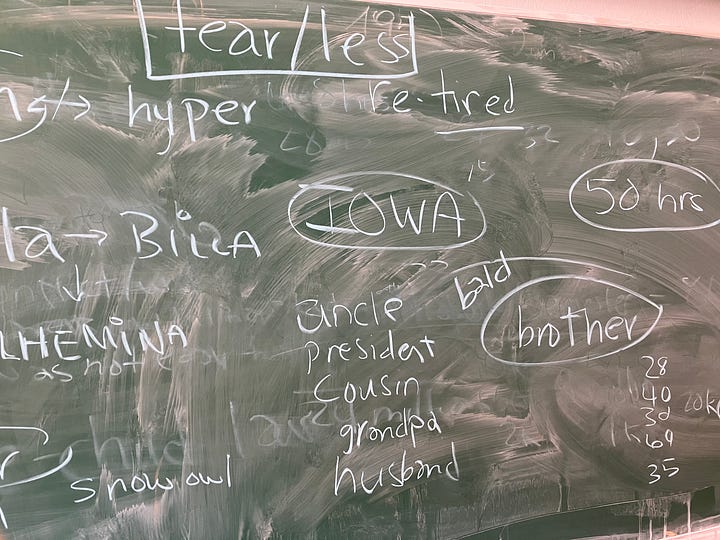

II. Andante: Over and Over
“Over and Over” is such a beautiful song it lulls me to sleep or at the very least, slows down my brain moving a million directions. I have a million goals and have been frustrated that there has been a variation on a theme I really do not want to repeat. Every time I move, which has been a lot in the recent years, I have the desire to engage in community through writing, volunteering, sports, but not following up. I have said I will go to the weekly running club in Graz, volunteer at the art gallery I saw the first week, and get signed up with the Alpenverein here but instead have accumulated plants and lost hours of sleep.
My sleepiness really reared its head when I ended up meeting the old TA, Haleigh in Graz as she needed to pick up some things. I was quite low energy, even going down the (73m) metal tube slide like I was getting swallowed by a worm. Apparently H and her friend K who is also a TA would do the slide routinely on Sundays when lesson planning or life got stressful. It was so nice to meet H finally as she is a dominant reason I decided to take the job. I saw her again in Vienna later in the week for Long Night of the Museums and even though I want to work on community building outside of english TAs, have been grateful for a soft landing in so many ways.
III. Minuet
I scoured the internet trying to figure out the difference between a minute and a waltz and all I can say is that there is the Minute Waltz by Chopin that confuses me with its wordplay: minute versus minuet. However, I do know that a minuet sounds quite playful which I have been told is my personality. Although I enjoy ranting about the French, I have transitioned to pushing the buttons of the UK TAs by claiming that US American english is superior to ‘received pronunciation’ or the British posh accent. However, we love our British friends and their posh accents and had them over for a game night and watching the movie Oppenheimer where our friend S provided a 1 liter bottle of 2 euro wine that was in a plastic bottle. He was really pushing my buttons as I am not a wine snob, but if I’m going to consume alcohol, it won’t be something that is meant to be downed in minutes and not savoured. Good wine is without a doubt, superior to SPAR wine.


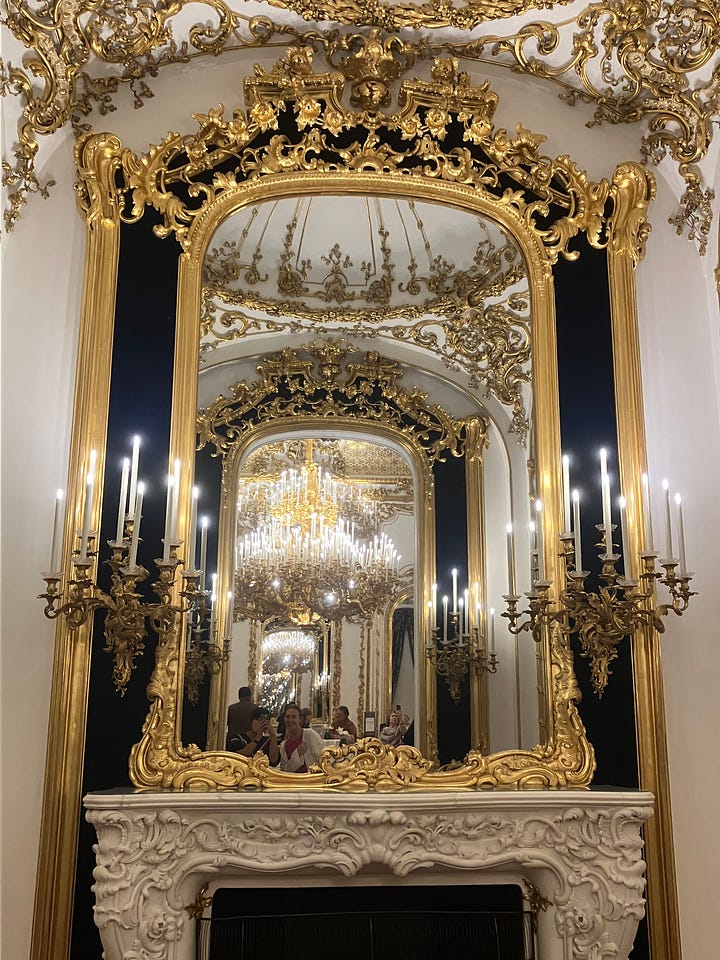
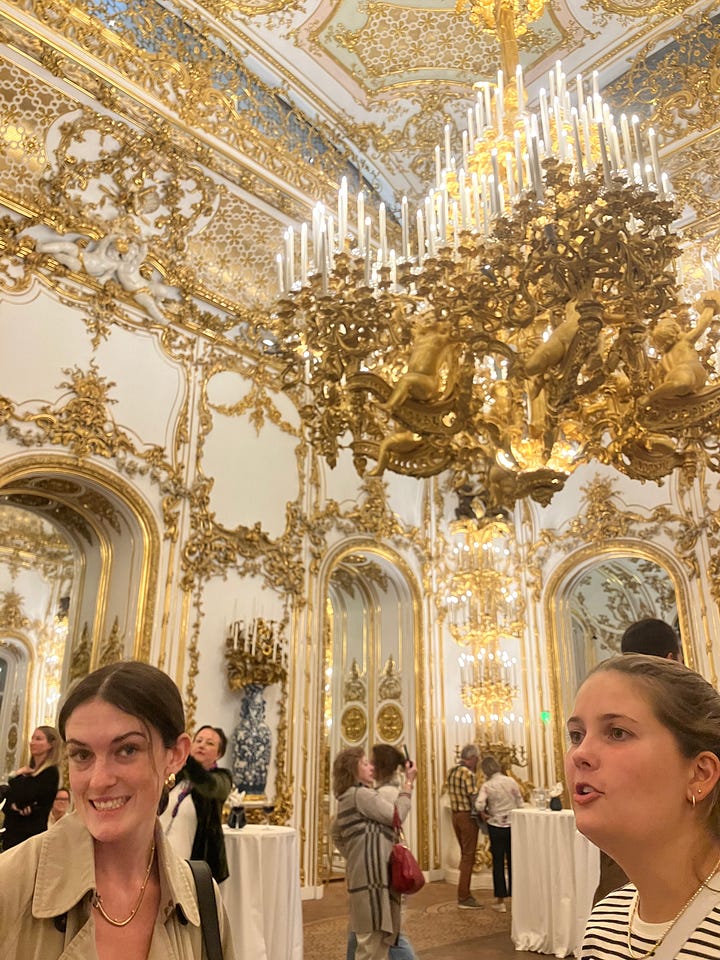
IV. Sonata Rondo
I have Fridays off so on Thursday the two TAs in Leoben, myself and J, and our two friends who live in the city but commute to other schools, R and M all got together to go to the annual Dorffest, Gösser Kirtag, which was full of terrible yet amusing schläger music, sweet foods and bread, and the longest line of stands in any Dorffest in Austria spanning from Leoben to the town of Göss where the brewery is (thus the name Gösser Kirtag). It was full on Bavaria vibes with the thick Steiermark accents coming out and a long day of walking. My teachers at the gymnasium told me about it and how excited the students would be and the plaza and walkways were absolutely packed. It was so cool to see how many people in the community come to enjoy the city-sponsored events and culture, even if it is a bunch of loud lads in lederhosen buying each other another round (pun on rondo) of messy Göss beer.
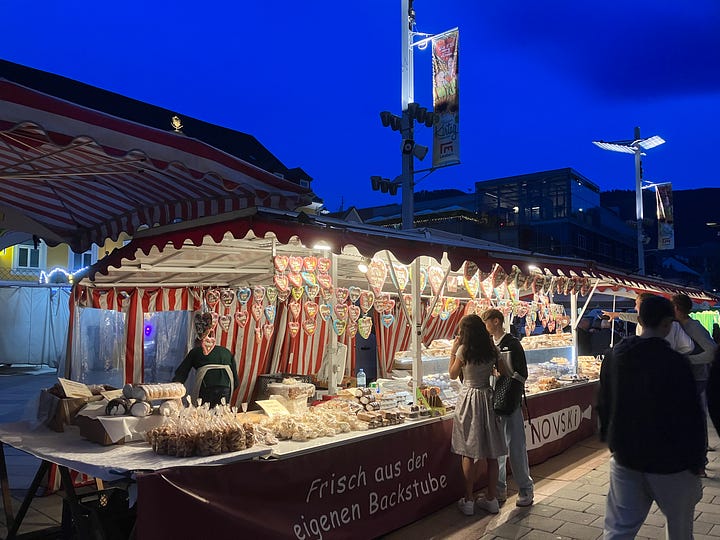
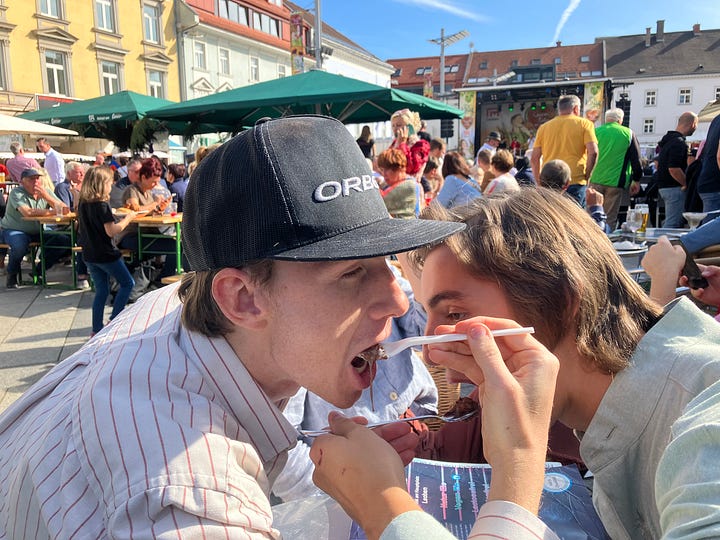
In contrast to the village culture vibe, I went and stayed with my friend Anna from Iowa in Wiener Neustadt for the Lange Nacht der Museen or the long night of museums which is an annual event funded by the national radio, ORF. Across all of Austria, all museums can be visited from 7pm until 1am with only a nominal ticket fee. It is an absolutely amazing programme and I can only dream as an art historian of something like this for the US. While I make fun of the UK, they are doing it right having their museums be free and public spaces for all to gather. Even with that large block of time, we only visited three museums in the Museumquartier including the Leopold Museum, the modern art museum (mumok), and the Palais Niederösterreich (St. Pölten the capital of Niederösterreich once again, makes an appearance). We got lots of steps in, stood in many a line, and got back to Wiener Neustadt at 2.30am. The theme of late nights and very little sleep…repeating themselves over and over.
Outtakes
M600 O11, 2023, 1
During the month of October, the steirischer herbst '23 festival full of lectures, readings, and art performances and installations is held. Slowly I am learning that if Vienna is the European hub of classical music, then its counterpoint Graz is known for its contemporary sound programs and progressive art. The poster was really cool and to be honest, I need bigger pieces to decorate my huge white walls in my room so should have nabbed it from one of the display columns. I missed the week that the contemporary music festival ran in Graz which was called musikprotokoll, but I had a friend who attended one where the musician Nick Acorne performed IX KLA VIER E, or a piece where he jumped from piano to piano stacked on top of each other in a warehouse with clanging construction noises. It seemed very interesting, but again, the sound of construction has been familiar enough with the loud rattling on the train tracks being serviced or the sound of J building a collapsible kitchen table with his handsaw that is not made for wood at all.
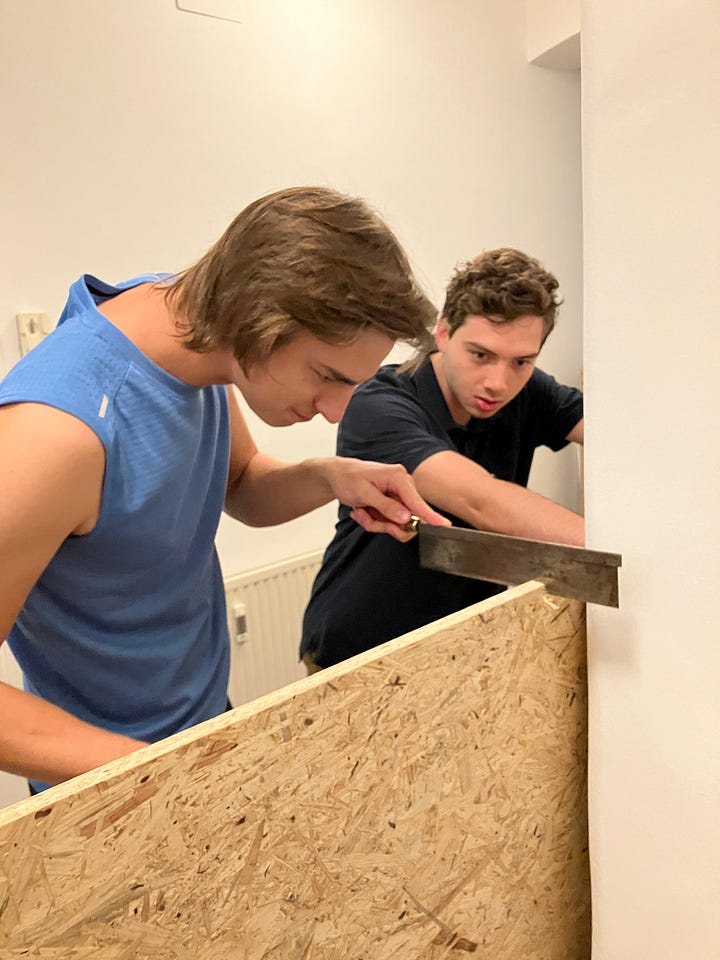

Conductor’s Notes
The English word rondo comes from the Italian form of the French rondeau, which means "a little round”. The rondo form emerged in the Baroque period and became increasingly popular during the Classical period. The earliest examples of compositions employing rondo form are found within Italian opera arias and choruses of the first years of the 17th century.
As I mentioned before, musikprotokoll was happening and an Italian friend who is a musician (he plays french horn) mentioned a new experimental opera, canvas, by the Slovenian composor Nina Šenk who won the 8th International Johann-Joseph-Fux Opera Composition Competition from Graz. We had talked earlier about how much we both loved Italian opera and how this opera reframes the Don Juan story from the perspective of the protagonist to four women. He kindly set aside a ticket to the opera premiere for Sunday night, and tale as old as time…after my weekend in Vienna, I laid down to go to take a little nap…and missed it. I was so so embarrassed and apologetic as he used the ticket on me that I promised to come Tuesday and watch it. Rounding back to two earlier problems these last few weeks, I had no cash as we are still waiting on our salary payments of two months and I assumed a contemporary music venue would take card. I was wrong. And I was late. And the nearest ATM was broken. And the lady at the desk was crabby and wouldn’t even let me buy a ticket online. And I had to sit in the opera lobby waiting for my friend as I once again, failed to attend his performance. At least we went for a beer at an Irish pub after so I didn’t have to walk back home with my tail between my legs. But I didn’t have any cash to pay at the bar. So it seems I have failed the Italian, moved on from making fun of the French, and will stick to my affection for the UK and disdain for hard cold cash.
Tying together the rondo idea of transformation and women composers, I have had a lot of discussions with friends about how we deal with, interact with, and asses problematic artists—especially in Austria or Germany where many composers were directly in service of or resisting fascist regimes or the Nazi party (e.g. Richard Wagner). At the Leopold Museum, their entire collection is devoted to only Viennese art. Many of the Vienna Secessionists or the Vereinigung Bildender Künstler Österreichs at the turn of the 20th-century embraced the beliefs espoused by the English artist, William Morris, and “spurned 19th century manufacturing techniques and favoured quality handmade objects, believing that a return to handwork could rescue society from the moral decay caused by industrialization.” Artists and architects including Gustav Klimt, Otto Wagner, Josef Hoffman, Oskar Kokoschka, and Carl Moll were also in dialogue with French, Belgian, and British creators and the collaboration produced a beautiful form of design with close attention to detail and vibrant patterns as well as many variations on the moustache.


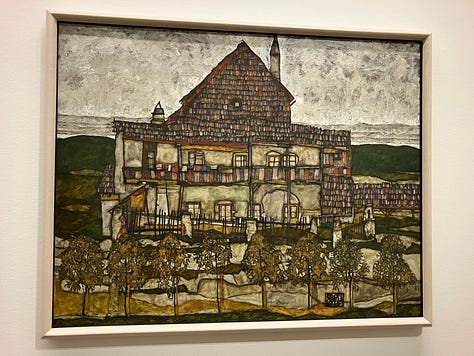


Despite the shimmering gilded Klimt pieces, the celebration of colour and figure, and visionary nature of the members pushing for progress and transformation, the muse trope and the ‘men-only’ club model pervaded. Alma Mahler, a composer in her own right, shows up again and again in the museum, in music, and in movies including Tár (2022) which deals with the very issue of monstrous people in the arts, isolation narratives, and the suppression of other artists to keep their own record of genius blemish-free. Depicted in many portraits as the muse figure and reduced to the ultimate femme fatale, Alma later landed in New York City and Los Angeles as she and her partner Franz Werfel fled when Austria was annexed. Many figures of the Vienna Secession Movement (Klimt and Kokoschka) and later the Bauhaus were romantically involved with her, but her role in holding space in the form of salon parties for intellectual engagement during the fin-de-siècle (french for “turn of the century”) in Vienna cannot be understated. Even Sigmund Freud apparently heard about Alma through Gustav who went to therapy to complain and worry about his wife. The historical and cultural fascination with Alma relies on the drama and rumours about her relationships with these figures, and makes criticism of her artistry and testimonies all the more intense and are judged more harshly, which in some ways, reminds me of how Stevie Nicks’ and Christine McVie’s own solo work will always be interpreted in conjunction with the men dominating rock music or a seemingly ‘progressive’ art movement that belongs to only men. I keep talking to my friend Ruby who went to art school about these tensions and how the trope of the genius in society is very permissive, forgiving much immoral action in the name of art or science and holds a double standard for men who are deemed ‘genius’ (Oppenheimer) and women whose ‘genius’ is defined in relationship to the men in their life. This has been a recurring discussion prompted by watching both Oppenheimer and Tár and being surrounded by many people passionate about art and music. As I continue to engage in cultural events in my free time, I will be thinking about how to talk about difficult narratives to young student’s in my classes and how to use music and art and literature as teaching tools to discuss issues we grapple with today like cancel culture or dealing with the violent rhetoric, intolerance and xenophobia cycling back in many countries—mirroring histories that should not be returned to and I desperately wish, would be over and over and over again.

